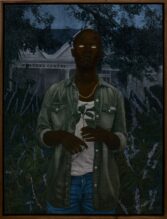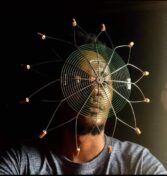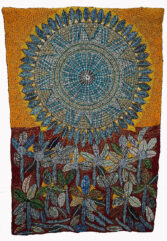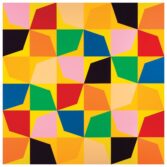
Iyabanda Intsimbi / The metal is cold, the South African artist Cinga Samson’s solo exhibition at the FLAG Art Foundation in New York, is composed of a series of (self)portraits and ‘private’ scenes that border on the ritual and funereal. Cinga’s portraits are pensive, sans pupil, cool and casual, confidently posing and adorned in gold. His dark palette of oils sinks his Black figures into ‘their’ world, threatening to disappear them into the Darkness that looms right behind
Vusi Nkomo on the Blackness of the works of Cinga Samson.
Ibhungane 9, 2020
Read more »





